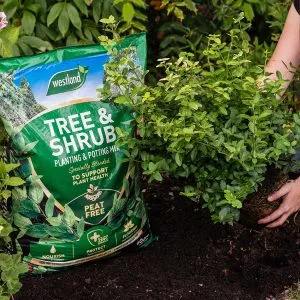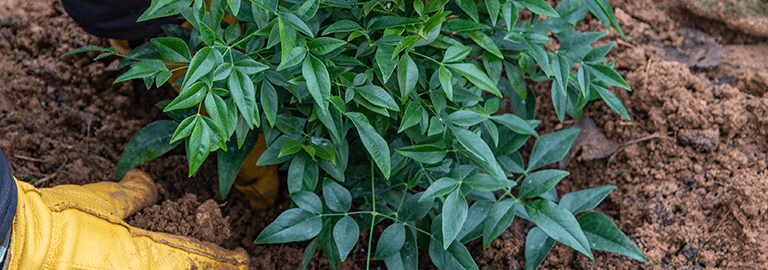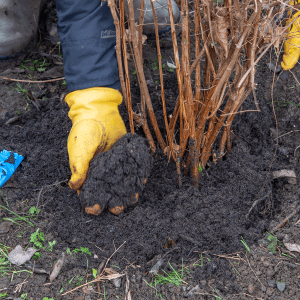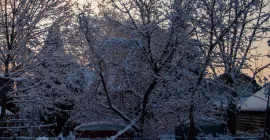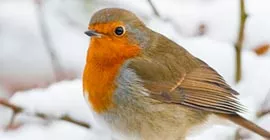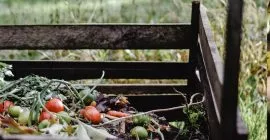Winter gardens are more popular than ever, and planting shrubs can add a splash of colour to your garden.
More than 100 gardens across the UK open with beautiful collections of snowdrops for the National Gardens Scheme. Garden centres and online retailers stock a range of plants that look great throughout the coldest months too. Some flower now while others have attractive stems or foliage. You can get these plants into the soil now, as long as ground is not waterlogged or frozen. Otherwise, pot them into larger containers to grow on for a few years.
Winter Flowering Shrubs
Choose from winter-flowering shrubs such as Daphne, Chimonanthus, Hamamelis, Lonicera x purpusii, Skimmia and plants with colourful stems such as bamboos, Cornus and Salix. Or choose evergreens with impressive leaves including Leucothoe, Aucuba and Nandina. All can be planted in winter if conditions are right.
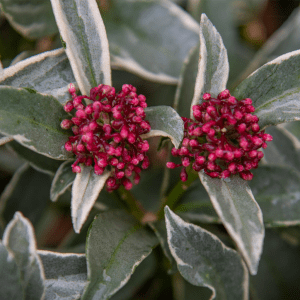
Pick a bright, dry, mild day to plant. Do not attempt planting if the ground is unworkable or if a severe cold spell is forecast. Allow your plants to acclimatise for a while outdoors, if came from an undercover area or a cold greenhouse.
Planting in winter is much the same as at any other time of year, but the colder, normally wetter weather means that plants may not need as much day-to-day care initially, although in spring they will still need watering in dry spells.
Planting a winter flowering shrub
1. First, make sure the plant is moist by submerging the pot in water for half an hour.
2. Dig a hole a little deeper than the pot and three times its width.
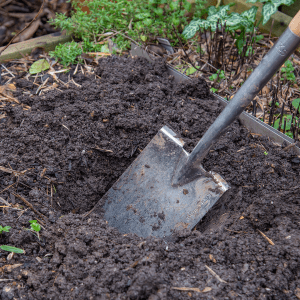
2. Fork over the base and remove roots and big stones.
3. Dig in garden compost, multi-purpose or shrub-planting compost, then knock the plant from its pot.
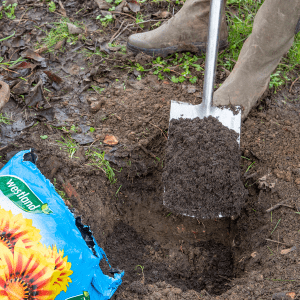
4. Loosen pot-bound roots then place the plant in the hole, making sure it is at the same depth as it was in the pot.
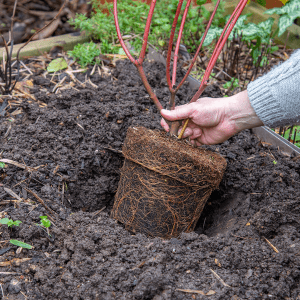
5. Back fill with a mix of soil and compost, and firm with the heel of your boot and water well.
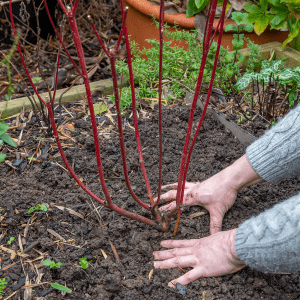
After planting it is worth adding a mulch of garden compost or composted bark. This will help the soil retain moisture, while feeding the plant, cutting down on weeding and helping to protect the roots in case of a sudden freeze.
Moving plants
January is also a good month to consider moving deciduous plants that have struggled through the growing season or are simply in the wrong place. They may be experiencing the wrong conditions or might have outgrown a location. Moving in winter minimises transplant stress as water losses will be lower. The longer a plant has been in the ground, the less likely it will survive the move.
It is best to move evergreens in autumn or spring. Successful moving of garden plants is all about preparation.
How to move plants
1. Make sure you have the new hole dug prior to lifting. Choose a cool, calm day and water the plant before you move it.
2. Use a spade to make a circular trench around the roots and tie in any branches.
3. Once the plant is free, slide an old blanket or sheet beneath and wrap to hold the root ball together, then move to the new position, remove the sheet and plant as usual, watering well. Bare-root fruit trees are available through winter and January is a good time to buy and plant them. This method of obtaining plants is cheap and often available via mail-order. Make sure you plant as soon as they arrive or heeled into the ground to prevent roots from drying out further.
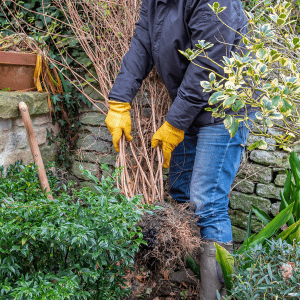
4. Prepare the area where they are to be planted adding garden compost, multi-purpose or shrub-planting compost, firm in and keep well-watered.
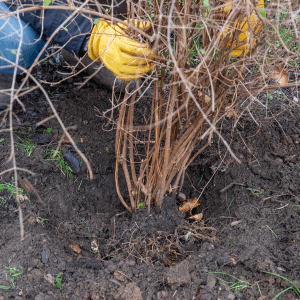
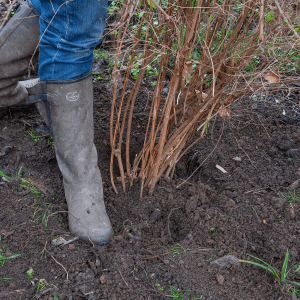
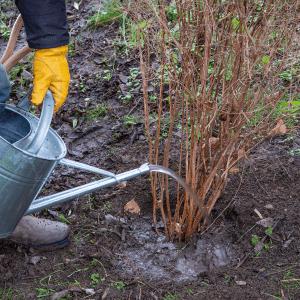
5. Mulch with composted bark.
Planting Hedges
January is prime hedge-planting time. Small, bare-root deciduous plants are available at a reasonable cost. Plants such as hawthorn, beech or hornbeam, all make great hedges. Usually, they come bundled together and containerised. Prepare the area where they are to be planted by adding garden compost or shrub-planting compost before you obtain the plants. Then you can get them in the ground as quickly as possible. Mulch with composted bark afterwards and keep well-watered.
